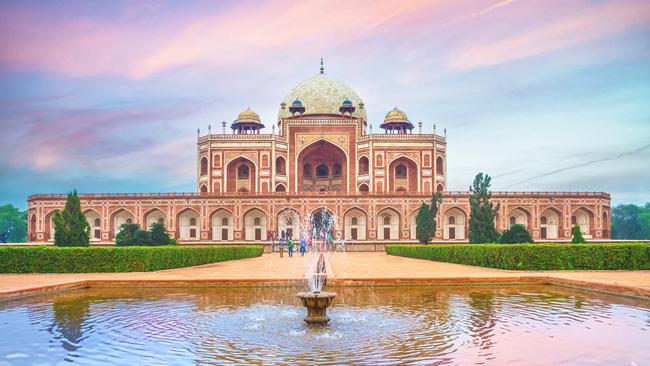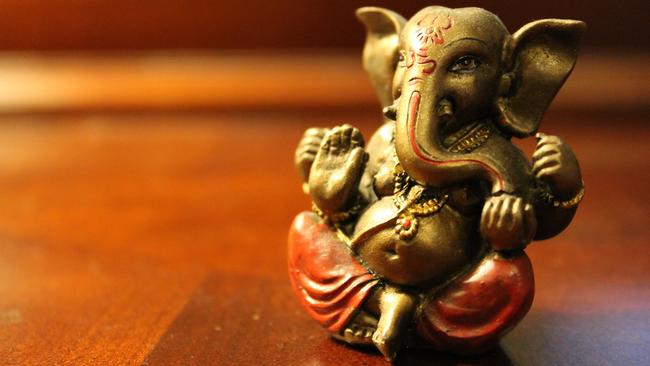Australia, this is how an airport should be
Australia's airports could learn a thing or two from their Indian counterparts, which have perfected the customer experience.

Lifestyle
Don't miss out on the headlines from Lifestyle. Followed categories will be added to My News.
At Delhi’s Indira Gandhi International terminal last month I had a vision of what a modern, well-staffed and customer-focused airport can be. It was nothing like what we put up with here in Australia.
Imagine, if you can, arriving on a long-haul economy flight to be met straight off the airbridge by a suited concierge who ushers me and my bags to a waiting buggy that whisks me a couple of kilometres through the sprawling terminal to immigration. I’m fast-tracked to a queue-less counter where an officer processes me promptly and courteously. My bags are collected for me and portered through customs so that, with zero stress at all, I’ve arrived in the Indian capital ready for adventure.

This red-carpet treatment is not standard for all arrivals. It’s a paid service my hosts, Banyan Tours, arranged for me. But it proves what’s possible when airports innovate and offer enhanced passenger experiences rather than just raking in profits.
The privatisation of Australia’s major airports between 1997 and 2002 was sold to us with the promise of greater efficiency and more competitive prices for passengers and airlines. Thanks largely to a failure of government regulation, that hasn’t happened. No less an authority than the Australian Competition and Consumer Commission has criticised the way our airports jack up prices while allowing services to decline. Anyone who uses Australian airports regularly can confirm this.
India’s major airports have also recently been privatised. But the government has taken a hands-on rather than hands-off approach, seconding highly skilled staff from the Airports Authority of India to lend support with terminal operations and air-traffic management, ensuring the authority still oversees operations – at least in the short term.
The purpose of privatisation is, we’re told, to allow more nimble and competitive commercial operators to innovate and upgrade airports for all. In India, this seems to have worked (despite some grumblings there, too, about private operators).

All five airports I transited through impressed with their competence. Security is strict (only vetted passengers can enter terminals so entry queues can be long but wait times rarely are) and services are well-staffed beyond the wildest dreams of Australian operators.
Passport control is still handled by officers at desks rather than by officials barking at you from the other side of an automated biosecurity kiosk (sound familiar?). Interacting with an actual human being rather than a machine when you’re stressed and possibly emotional? Revolutionary stuff.
At check-in, the switched-on domestic airline Indigo has an army of blue-shirted “service partners” who assist departing passengers by tagging bags and dispatching them on the belt while you get your boarding pass from the check-in counter. It’s a free service – their shirts even have “No tipping please!” printed prominently on them to make that clear.
Security screening is as smooth as it ever can be given there are humans involved. The toilets weren’t always spotless, I’ll admit, but certainly better than the arrival-hall loos at Melbourne International. (The horrors I’ve witnessed in that place.)

At Calcutta Airport arrivals I was amazed to find an “arrival manager” at my baggage carousel. He was miked up like Madonna and, after stating his name, invited us to “contact (him) for any further assistance”.
These are the sorts of innovations we should, as a famously proud and wealthy nation, be pioneering ourselves. Paid concierge services on arrival and departure are a great example of how smart ideas can benefit passengers as well as boost profits. But the Calcutta episode contrasted starkly with my arrival into Sydney Airport from the Cook Islands a month earlier. Mine was just one of only two flights – the other was from New Zealand – in the terminal and still it took more than an hour for my bag to arrive.
As a result, I was one of several people who missed their connecting flights. When I eventually pinned down a Jetstar ground-staffer (they were AWOL for most of that hour) he claimed the delay was due to a power outage. “It’s an airport issue,” he said.

Sydney Airport, in turn, told me there was no issue they were aware of. When I queried how and why Australia’s international gateway had buckled under the combined pressure of two international flights, all I got was a glib, “We are sorry to hear that your arrival experience did not meet your expectations” response.
I’m conscious the positives I’ve mentioned above include the actions of airlines as well as airports. But both sides have a responsibility to put travellers’ needs first and focus on how they can improve airport procedures for users. We are, after all, the ones who fund their record profits.
FLYING COLOURS
Delhi Airport is a treat. Hidden in its vast, gleaming shell is at flight simulator to test your skills before take-off, a full-service hair salon and a WH Smith that stocks elephant-headed Ganesh statues and easy-to-assemble miniature Taj Mahals.
More Coverage
Originally published as Australia, this is how an airport should be





